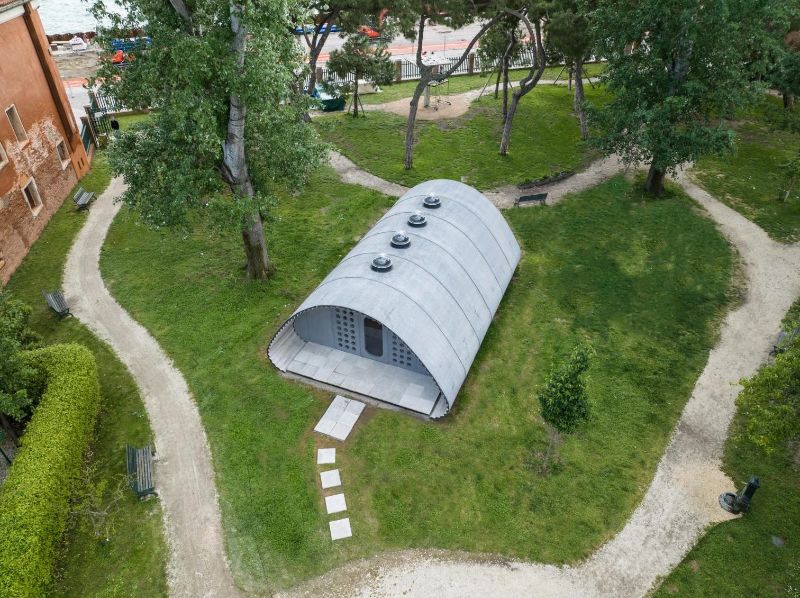An oddly shaped house was unveiled for the Disaster Resilience Month of July that is meant to withstand natural disasters and other extreme conditions.
Cement manufacturer Holcim, which built the housing prototype, says the structure provides safety and comfort for people in displacement.
The company initiated “The Essential Homes Project” in May by reimagining temporary shelters for victims of disasters in countries like the Philippines, which is highly vulnerable to typhoons and earthquakes due to its location in the Pacific.
“Our company has regularly participated in relief and rehabilitation efforts for communities affected by natural disasters and conflict,” said Holcim Philippines Chief Sustainability Officer Zoe Sibala.
What makes the house different?
The tubular house made of bamboo and cement is meant to be energy-efficient. Its construction, for one, makes use of low-carbon blended cement, a type of concrete with a smaller carbon footprint than traditional cement.

Exteriors. For the house, the gray shell is made of a rollable concrete sheet.
The pathways are also permeable, which seem to absorb and reflect light even at night, thus reducing energy use.
Insulation, which involves materials that prevent heat from being transmitted inside, is also improved using Elevate boards and Airium foam—high-quality and energy-efficient materials that allow thermal and acoustic comfort.
For the base, recycled demolition materials were used. This is just one of the several components of the modular unit that can be recycled or reused once dwellers of the temporary shelter stop using it.
The prototype, which was exhibited at the Essential Homes Research Project in Venice last May, was a collaboration between the global cement company and the Norman Foster Foundation.
Holcim Philippines said the project was its inspiration in efforts and partnerships to drive climate-resilient housing in the Philippines. One such proposal is to recreate the prototype as safer, more comfortable and decent shelters for displaced communities. — with Bless Aubrey Ogerio

